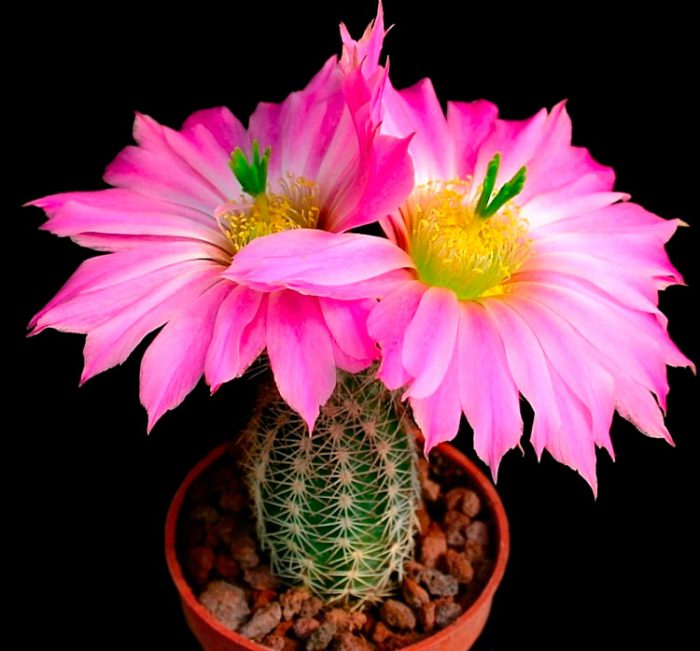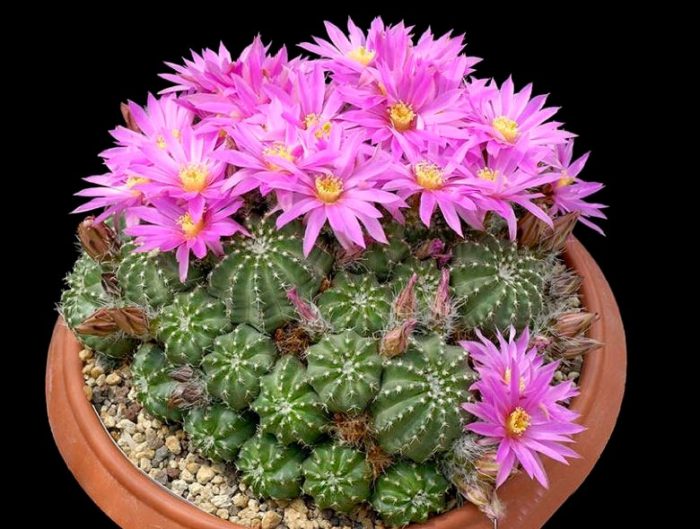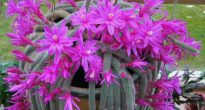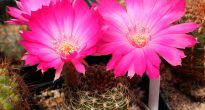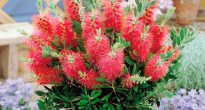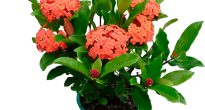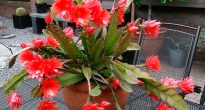Genus of plants echinocereus (Echinocereus) is directly related to the cactaceae family (Cactaceae). It brings together about 60 species of different plants. It occurs naturally in the southern regions of North America.
Cacti of this genus are distinguished by their small stature (up to 60 centimeters), stems that branch strongly, and the presence of thorns on the tubes of areoles and flower buds. Therefore, the name of the genus of such plants contains the prefix "Echinus", which literally translates from Greek as "hedgehog".
Tubular, single, multi-petal flowers have a funnel shape. At the end of flowering, fleshy and very juicy fruits are formed. They can be eaten, and in some species of Echinocereus, they are incredibly tasty.
Many species of this plant have not only similarities, but also clear differences between themselves. So, the stems are either cylindrical or spherical. Spiral or straight ribs are pronounced or barely noticeable. Flowers can be both small and large.
Content
Echinocereus care at home
This plant is distinguished by its undemanding care, which has caused such great love for flower growers. The cactus of this type is considered the most unpretentious of all that make up this family.
Illumination
The plant needs bright light throughout the year, while it is desirable that the direct rays of the sun fall on it. In this regard, it is recommended to place it near a south-facing window. In the summertime, Echinocereus is recommended to be moved outside (to the garden or to the balcony).
Temperature regime
In summer, the cactus feels great at temperatures from 25 to 30 degrees. In winter, he has a dormant period, and for this time he needs to be rearranged to a fairly cool place (no higher than 12 degrees).
There are many types of such cacti that are frost resistant. For example, species such as Echinocereus sharlach and Echinocereus triglochidiata are able to tolerate a drop in temperature from minus 20 to minus 25 degrees. They become like glass, completely freezing, but with the arrival of spring they thaw and continue to grow. Therefore, there are florists who choose a glazed balcony or loggia for year-round placement of Echinocereus.
It is worth considering that not all species are frost-resistant. For example, thornless echinocereus can die if the room is colder than minus 1 or 2 degrees.
How to water
Water should be moderate in spring and summer.In this case, watering should be carried out only after the earthen lump dries completely. Overflow should not be allowed. If the soil is constantly wet, root rot may develop.
For watering, you must use settled, soft water, which must be at room temperature. Experienced growers also recommend filtering it.
In winter, the plant should not be watered. This is especially true for those of the cacti that are in a cold room or brought out into the cold.
Air humidity
High humidity is not needed. At the same time, it is impossible to spray the stems themselves, as they can be severely damaged due to water, which lingers for a long time on their surface. It should also be taken into account that excessive dampness can provoke rotting of both the stems and the root system.
Earth mix
Suitable soil should be loose and mineral. For indoor cultivation, you can use a commercial soil mixture intended for succulents and cacti. But only ¼ part of fine gravel and the same amount of coarse sand will need to be added to it.
Top dressing
Top dressing is carried out during the intensive growth of the cactus once every 4 weeks. For this, special fertilizers are used for succulents and cacti or for orchids. With the onset of the autumn and until the end of the winter period, fertilization cannot be applied to the soil.
Transplant features
Young specimens should be transplanted once a year, and adults - once every 3 or 4 years, after the root system of Echinocereus ceases to fit in the pot. It is recommended to transplant in the spring.
Reproduction methods
The cactus is easily propagated by baby cuttings or seeds.
Diseases and pests
Not susceptible to diseases and pests. Almost the only problem that arises when growing this cactus at home is rot, which appears when the soil or air is too humid.

